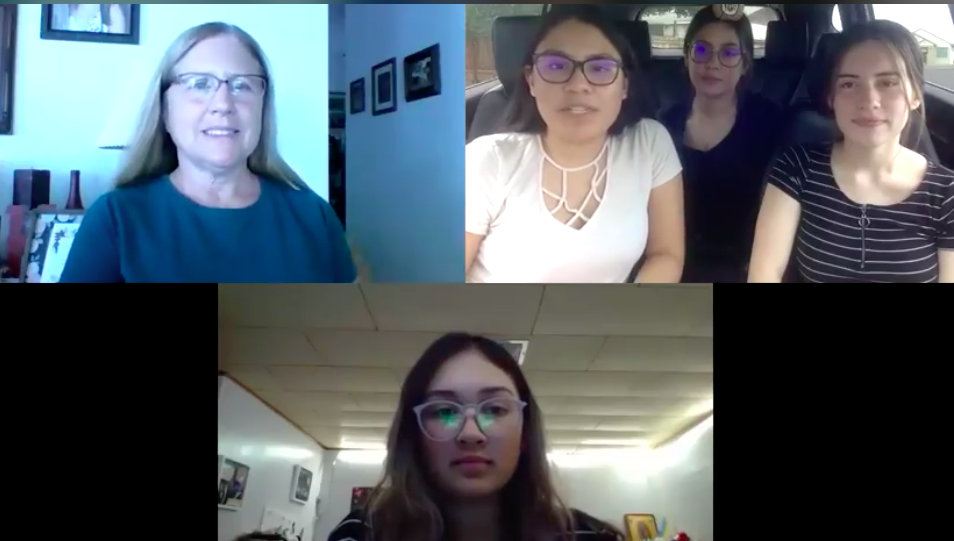
From Quincy, Wash.,l 4-H group's Facebook page
.
Having young people teach digital skills to adults seems like a no-brainer. After all, how many adults have gotten a teenager to help them with an app or a device?
In spite of this talent pool, relatively few structured programs put teenage knowledge to use.
One program that has done so, however, is 4-H Tech Changemakers.
In May, three high school students sat in a car outside a public wi-fi hotspot in Quincy, Wash., with a laptop. Another student and their adult advisor joined them via Zoom. The group recorded a video letting Quincy residents know about four wi-fi hotspots set up for public use outside the library, community center and school.
“We’re making this video to let you guys know that we’re here to help you virtually with any questions you have about your phone or browsing the internet so feel free to send us a message through our Facebook page,” said Daisy Buenrostro, a Quincy HIgh School senior, on the video.
Vivian Geesy, a Quincy High junior, then gave the same message in Spanish.
Before the pandemic, the four girls had been teaching adults at weekly sessions at the Quincy Senior Center and Quincy public library.
They had taught two retired teachers to use their cell phones. A small business owner learned to make better use of his computer. A young man got lessons in Excel so he’d be prepared for his new job. Some people working on farms in the area came in to gain new skills.
“We’re a small rural community,” said Jeannie Keihn, Washington State University’s Grant County 4-H program coordinator. “Broadband connection is really difficult for a lot of people.” Quincy is located in an agricultural area that has a large Latino population.
Across the United States, 19 million people in rural areas lack broadband internet.
The 4-H Tech Changemakers program, begun in 2017 in a partnership between Microsoft and the National 4-H Council, was intended to increase digital skills in areas where they were lacking and to help young people become problem solvers around technology. Many of the grants to local 4-H programs end this summer. Theirs ends in July, but Keihn is hoping the program can somehow continue.
The 4-H members in Quincy chose to address the digital divide between adults and youth, Keihn said, which also connected the youth to their community and promoted respect.
As a youth development program, it can empower the teens as they become teachers and communicators.
When the coronavirus epidemic hit, the Quincy 4-H group had to figure out how to continue its work.
“The senior center was the first place to close,” Keihn said. The group discussed what could be done. They learned that wi-fi spots were being set up to broaden internet access during the pandemic.
“People could drive in [the hotspot area], stay in their cars, do work on computers or phone,” Keihn said.
After a lot of discussion, the group decided to reach people through Facebook, inform them about the hotspots and offer instruction. They plan to make additional videos, Keihn said.
Nora Medina, a Quincy High senior, said she enjoyed helping adults become more confident with computers and cell phones. “In the beginning, they were really shy with technology,” she told a Washington State University publication.
The fourth member of the group is Esmeralda Buenrostro, a sophomore at the school.































